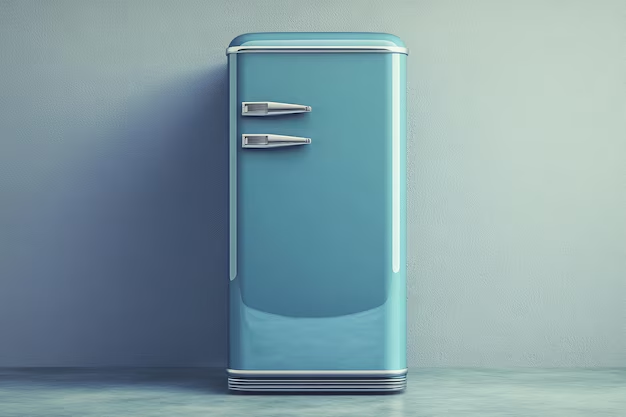The Evolution of Refrigeration: What Did the First Refrigerator Look Like?
Imagine a world where keeping food fresh was a daily struggle against time and the elements. Before the modern comforts of refrigeration, people relied on natural methods like ice, snow, and cool stream water to preserve their perishables. So, what did the first refrigerator look like, and how did it revolutionize the way we live today? Let's journey through time to explore this fascinating evolution.
From Iceboxes to Electric Wonders: The Early Days of Refrigeration
The concept of refrigeration has been around far longer than most people realize. Long before the advent of mechanical refrigeration, ancient civilizations used ingenuity to preserve their food.
The Use of Ice and Snow
Ancient methods of food preservation mostly involved using naturally occurring cold environments:
- Ancient Egyptians and Indians: Utilized evaporation to cool water pots, similar to how sweating cools the human body.
- Romans and Greeks: Stored snow in insulated pits to keep food cold, which was essentially the precursor to the icebox.
Enter the Icebox
The first real step toward what we'd recognize as refrigeration was the icebox. These early devices were simple insulated cabinets where large ice blocks were placed to help keep the contents cool.
- Construction: Typically made from wood and lined with materials such as tin or zinc, iceboxes had compartments to store perishables.
- Functionality: Ice harvesting was crucial, with ice being cut from lakes and shipped, sometimes across continents, to meet demand.
The limitation of the icebox was its reliance on manual replenishment of ice, making it less practical for locations and seasons with limited ice availability.
The Dawn of the Mechanical Refrigerator
The leap from using natural methods to artificial cooling marked a pivotal moment in refrigeration history.
The Development of Mechanical Refrigeration
- The Early Inventors: In the early 19th century, inventors like Oliver Evans and Jacob Perkins laid the groundwork for vapor-compression refrigeration—an innovation that would become the foundation of modern systems.
- First Patented Design: In 1834, Perkins built the first closed-cycle vapor-compression refrigeration system, which used ether and a manual pump.
Though functional, these early systems were limited to industrial uses due to their complexity and cost.
The First Household Refrigerator
The true game-changer came in 1913 when the Domelre (DOMestic ELectric REfrigerator) was introduced. It was a compact design meant for home use:
- Structure: Consisted of a small refrigeration unit that could fit on an icebox, combining the mechanics of a compressor with the familiar icebox design.
- Energy Source: As implied by its name, it was one of the first to rely on electricity.
By the 1920s, other models such as the Kelvinator and the Frigidaire began to emerge, each innovating on the basic design to improve efficiency and lower costs.
The Refrigeration Revolution: Transition to Modern Appliances
As technology advanced, so did the features and functionality of refrigerators.
Key Innovations
- Freon: Introduced in the 1930s, chlorofluorocarbon (CFC) compounds revolutionized refrigeration by providing a non-toxic, non-flammable refrigerant.
- Automatic Defrost: Became a standard feature in the mid-20th century, eliminating the manual labor of defrosting.
The Post-War Boom
After World War II, refrigerators became a household staple in industrialized nations. The design emphasis shifted towards affordability, efficiency, and aesthetics:
- Color and Style: Consumers started seeing appliances as expressions of style, which led to diverse color ranges and innovative designs.
- Accessibility: Refrigerators now offered more space, better temperature control, and various features like special compartments for different food types.
What Makes a Modern Refrigerator So Different?
Today's refrigerators are a far cry from their predecessors. Modern appliances blend advanced technology with consumer needs.
Features of Contemporary Refrigerators
- Energy Efficiency: Fueled by improvements in design and materials, today's refrigerators use significantly less energy than earlier models.
- Smart Technology: Some units now have digital interfaces, Wi-Fi connectivity, and can even self-diagnose issues.
- Environmental Concerns: The move from Freon to more environmentally friendly refrigerants reflects a broader effort to reduce the ecological impact of refrigeration.
Staying Fresh with Innovations
Refrigerators today go beyond cooling:
- Humidity controls: Specific drawers and compartments maintain precise humidity levels to preserve different food types better.
- Air filtration: Advanced systems keep odors at bay and ensure fresh airflow within the appliance.
A Future Focus: What Lies Ahead for Refrigeration Technology?
Refrigeration continues to evolve with technology, a key player in the quest for hyper-efficient and environmentally friendly solutions.
Emerging Trends
- Eco-Friendly Designs: As climate concerns grow, so does the focus on low-impact refrigerants and improved insulation.
- Artificial Intelligence: AI integration for smarter food management and energy use, minimizing waste and optimizing use.
- Compact and Versatile: Innovations in size and shape that adapt to evolving living spaces, reflecting urbanization trends.
The Ever-Changing Landscape
The future of refrigerators looks to bring even more convenience and efficiency. The focus is likely to remain on integrating technology with sustainability, catering to increasingly conscious consumers.
Summary: Key Takeaways from the History of Refrigeration 🧊
- Ice Age Practices: Early preservation relied heavily on natural solutions like ice and snow.
- Mechanical Breakthroughs: Inventors like Evans and Perkins pioneered vapor-compression models, although initially impractical for home use.
- Household Milestone: The Domelre marked the shift to electrically powered home refrigeration.
- Modern Upgrades: Advancements include Freon introductions, defrost technologies, and smart integrations.
- Towards Tomorrow: Emphasis on eco-friendliness and cutting-edge features drive innovation in refrigeration.
Refrigerators have traveled an incredible journey from the simplicity of iceboxes to the sophisticated smart appliances we know today. As they continue to evolve, we're reminded of their humble beginnings and the ingenuity that has continually revolutionized our lives. Whether it's keeping groceries fresh or chilling a summer beverage, refrigerators remain an indispensable fixture in homes across the globe—and their future is as exciting as their history is rich.
